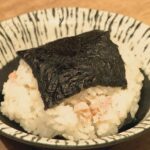This is at the ama hut “Hachiman Kamado” in Toba City, Mie Prefecture. Enjoying fresh seafood like Ise lobster is Panissara Arayasukul, who works as a host and actor in Thailand. She was appointed this year as “Mie Inbound Ambassador 2025”.
Her Instagram follower count exceeds 6.5 million. She enjoyed Toba’s seafood and filmed a promotional video. This is a strategic promotion by Mie Prefecture utilizing the power of influencers.
“This person has tremendous influence locally in Thailand. By having them communicate the detailed charms of Mie Prefecture, we hope the prefecture’s recognition will increase and many inbound visitors will come to Mie.”
The group will tour around Ise City tomorrow and depart for their home country the day after. It would be a waste for the town’s appeal to remain hidden… This is Mie Prefecture’s new move.
Mie Prefecture
Mie Prefecture is a region in central Japan historically known as the seat of power for the Ise Grand Shrine, one of Shinto’s most sacred sites. The prefecture is also famous for the Iga-ryū school of ninjutsu and is home to significant pearl cultivation in Ago Bay. Its cultural heritage is deeply tied to its long history as a center for spiritual pilgrimage and traditional craftsmanship.
Toba City
Toba City is a coastal city in Mie Prefecture, Japan, renowned as the home of the Mikimoto Pearl Island. It is historically significant as the birthplace of the cultured pearl industry, pioneered by Kokichi Mikimoto in the early 20th century. The city is also famous for its scenic beauty, including Ise-Shima National Park, and its connection to the traditional female pearl divers known as Ama.
Hachiman Kamado
Hachiman Kamado is a Shinto shrine located in Dazaifu, Fukuoka Prefecture, Japan, dedicated to Hachiman, the god of war and archery. It was historically established in the 9th century and served as a key religious site for the Chinzei branch of Hachiman worship, closely linked to the nearby Dazaifu Tenmangu Shrine. The shrine is known for its annual fire festival and its long-standing role in local spiritual traditions.
Ise lobster
“Ise lobster” refers to a prized variety of spiny lobster (Ise ebi) caught in the waters near Ise City in Mie Prefecture, Japan. It has been a celebrated delicacy for centuries, historically offered at the Ise Grand Shrine, one of Japan’s most sacred Shinto sites. Today, it remains a symbol of luxury and is traditionally enjoyed during celebratory occasions, especially in the New Year.
Ise City
Ise City is a major Shinto pilgrimage center in Japan, renowned for the Ise Jingu (Ise Grand Shrine). The shrine, dedicated to the sun goddess Amaterasu, is one of Shinto’s holiest sites and is believed to have been founded over 2,000 years ago. A unique tradition is the ritual rebuilding of the shrine’s main structures every 20 years, a practice that has been maintained for centuries.
Mie Inbound Ambassador 2025
Based on the available information, “Mie Inbound Ambassador 2025” does not appear to be a historical place or cultural site. It is a promotional campaign or program, likely launched by Mie Prefecture in Japan, to train and appoint ambassadors to promote tourism and attract international visitors to the region in the year 2025.






